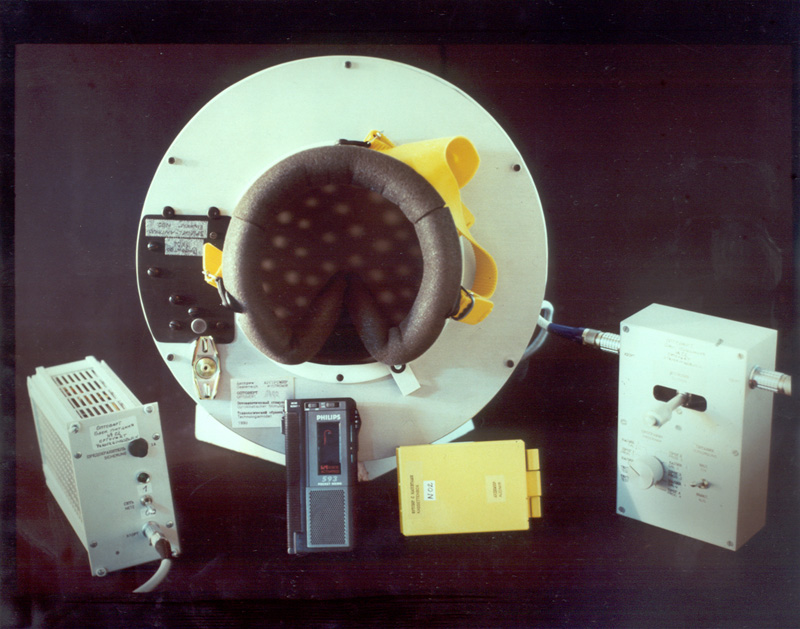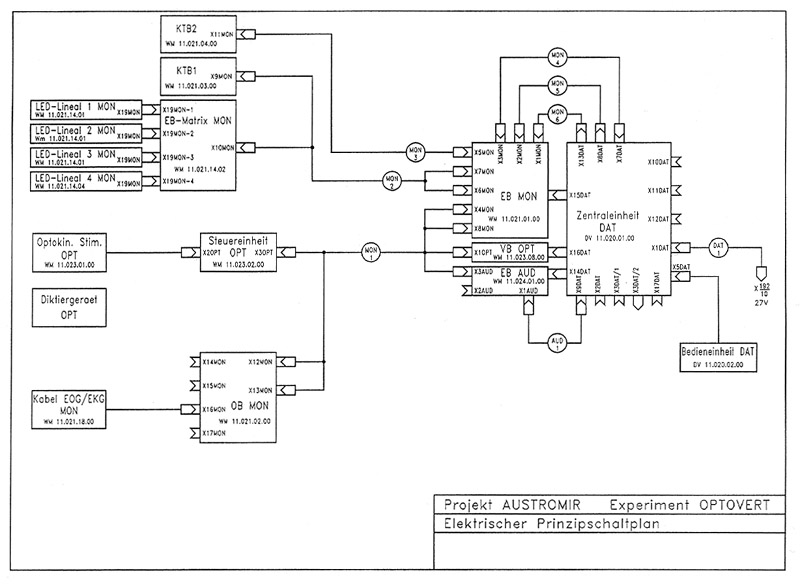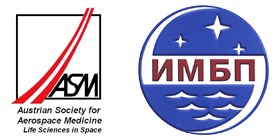Most people have more than once noted how a train next to the one they’re sitting in moves, and have a feeling that their train is actually moving. In reality, the observer is standing still and the object moves. The layman says it’s an optical illusion – the expert says it’s a linear vection.
Vection is defined as the invention of (apparent) self-movement that results from the processing of visual information about the environment’s movement. The reason for this illusion lies in the interaction of information sent from the eyes and the equilibrium organ. Based on the anatomy of archways, the information stream from the equilibrium organ wins because, although the same movement, it’s shorter. This means, the equilibrium sense doesn’t give information on whether the observer is still or moving constantly. He must therefore trust the information stream coming from the eyes.
There are generally two forms of spacial orientation: static, where the subject and the environment (object) are standing still, and dynamic, where the subject and/or the object are moving.
The investigations which were made during the spaceflight on biosatellites and space stations showed, that the weightlessness changes the function of orientation mainly and disturbs their evolutionary conditionaled interaction.
Objectives
The OPTOVERT experiment was about studying human orientation in space. The goal was the research of the cosmonauts’ vestibular function and the vestibular-visual interactions in all three expeditions. The basis of the theory of sensory interactions and the adaptation of the brain’s sensory systems under changed gravitation conditions should be created, as well as determining the types of adaptive adjustments in the sensory area during gravitation changes.
Functionality, Measuring principle
During the execution of the experiment, the cosmonauts carried a so-called opto-kinetic simulator; a cylinder that is fastened with elastic bands like a face mask. A hemispherical projection screen was located in the cylinder’s interior, on which a moving light spot pattern was projected. The cosmonauts executed the experiment both floating as well as being fastened to a mat. For this reason the role of the body’s sensory organs for special orientation was tested.
The eye’s reaction to object movement is denoted as opto-kinetic. Apart from objective measurements of the eye movements, the subjective orientation sensitivity of the cosmonauts was also captured, in addition to speaking about their impressions on a tape. Additionally, the cosmonauts notified whether their sight was above or below with the help of a moving light pointer. The control mechanism was fastened to the cosmonauts’ belt. A program selection switch facilitated the selection of test and calibration programs as well as the four automatically executable programs for the different experiment parts. Thereby, an electronic memory unit provided the right timely sequence of the directions and speed of the pattern movements and the activation of the movable orientation pointer LED’s.
Although the same devices were kept, the procedure of the OPTOVERT experiment was different in a few points. The experiment’s program was changed.
The OPTOVERT-2 program consisted of the following 4 sections
- Analysis of spontaneous eye movements, line of sight nystagmus and optokinetic nystagmus.
- Analysis of latency, intensity, alignment and dynamic of the vertical vection.
- Analysis of the phase relationships of the predictive sinus movement and the motor following movement of the hand as well as the movement illusion (vection).
- Analysis of the phase relationships on the non-predictive sinus movement and the motor following movement of the hand as well as the movement illusion (vection).
Shared equipments of the Austrian payload
DATAMIR
Results
Based on the examinations within the framework of the OPTOVERT program, it was shown that micro-gravitation changes the activity of gravitation-dependent systems considerably. The first impacts of micro-gravitation are illusions of location or movement of the body in space, dizziness, increased eye movement activity, and the development of a spontaneous nystagmus. Abnormal perceptions and sensomotor reactions are the direct result of sensory changes and the subsequent sensory adaptation processes. The adaptation to weightlessness occurs both during subjective good state of health and during the lack of abnormal vegetative reactions. This works hand in hand with an adjustment of the sensory systems’ interactions, leading to these functioning on a new level. Intensive perceptions, sensomotor and vegetative reactions were observed on Yelena Kondakova, whilst they were not observed on Aleksandr Viktorenko.
The execution of the OPTOVERT experiment enabled the determination of distinct individual characteristics during the sensory systems’ reactions on the long-term effect of weightlessness. Despite the individual characteristics of the sensory systems’ reactions in weightlessness, valid changes were found in general: Change of the Vertical Vection Illusion (VVI) character and the creation of a VVI asymmetry; change of the threshold level and larger intensity of VVI; change of irritability of eye movement centres; sinking stability of dynamic and static orientation. An important affect of micro-gravitation influence is the decoupling of evolutionary built visual-vestibular interactions. The central-vestibular system must build a new processing mode that basically works perfect during long-term flight, but exhibits differences to earth conditions during detailed examinations. It therefore resulted in periods of de-adaptation, in which spontaneous nystagmi, inverse vection or phase movements of the vertical vection resulted.
Technical characteristics
The equipment OPTOVERT consisted of the following units


Supply block (VB OPT)
This unit was delivered integrated in the central unit of the system DATAMIR.
| Mass: | 0.7 kg |
| Dimensions: | 191 mm x 129 mm x 71 mm |
| Power input: | 20 W |
Aluminium container with additive and reserve assembly
- Optokinetic stimulator
- Optokinetic projection unit
- Projection lights unit (3 pieces)
- Operating unit to control the optical stimuli
- Voice recorder
- A set of energy maintenance for the voice recorder (2 sets each with 2 batteries)
- Cassettes box with 4 audiocassettes
- Head fixing
- Reserve assurances
- Reserve drive belt for the project unit
| Mass: | 7.6 kg |
| Dimensions: | 460 mm (Diameter) x 455 mm (Hight) |
Experimenters
Univ.-Prof. Dr. Luder Deecke (institute manager)
Dr. Christian Mueller (project manager)
Dr. Gerald Wiest
Dr. Nikolaus Steinhoff
U. Wintersperger
Daniela Starkel
all: Neurological University Clinic Vienna
L. N. Komilova
N. I. Arlaschenko
L. M. Tschernobylskij
S. V. Sagalovich
A. V. Saranzena
all: IMBP (Institute for Biomedical Problems), Moscow
